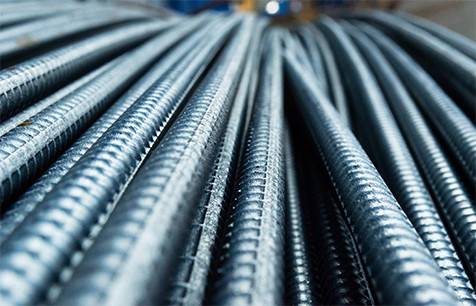Ongoing geopolitical conflicts—including an active war—alongside market instability, declining steel demand in some global regions, and rising protective tariffs on exporting countries, have pushed several steel-producing nations, including China, to reassess and refocus their steel industry supply chains.
Faced with weak domestic demand for steel due to slowing economic growth, China’s steel industry has revised its export roadmap. For example, the value of its alloy exports to Russia rose by about 16% in the first five months of 2025, compared to just 1.3% in 2024. According to the report, the export list mainly includes types of stainless and specialized steel not manufactured in Russia. However, imports of standard construction steel from China have started gaining momentum in several regions.
Steel production in Russia declines
Media reports indicate that Russia’s steel production is in decline due to sanctions imposed following its invasion of Ukraine. According to a report by World Steel, Russian steel output fell 7% year-on-year to just over 70 million tons in 2024. Within the Russian steel sector, companies cut production by between 8% and 14%.
When sanctions were first imposed, Russia redirected its steel supply toward the Middle East, North Africa, China, and even India in an attempt to offset the loss of EU and U.S. markets. However, in the years that followed, the Chinese market also began to slip away from the Russian Federation. By 2024, shipments of ferrous metals to China had nearly halved.
At the same time, Russian steel mills found themselves grappling with cheap steel that China began shipping to Russia to offload its own industry’s surplus. Now, China’s attempts to export steel to MENA countries are also starting to fade.
The Chinese game
While this clearly affects Russia, the bigger story here is about China. Viewed from another angle, both countries are competing for position in the global steel industry. Yet the Kremlin is at a disadvantage due to sanctions. China, on the other hand, enjoys the upper hand as the world’s largest steel producer and consumer.
At present, China is making a concerted effort to find new buyers, especially as local buyers and former export partners are no longer purchasing steel at the same rate as in previous years. Recently, Beijing turned to Asian and Southeast Asian markets to flood them with steel—until some responded with tariffs, much like the United States did.
So far, this strategy has maintained China’s steel output levels. However, some industry experts believe that total Chinese steel consumption—including exports—will eventually decline either by the end of 2025 or sometime next year. The Chinese steel industry continues to prioritize exports.
According to Reuters, China’s steel product exports rose by 1.15% between April and May, and by about 10% year-on-year. This helped push steel output to a seven-month high of 10.58 million tons. The reasons for this export surge varied, including fears of upcoming tariff hikes.
Between January and May 2025, Chinese steel exports hit a record high of around 48 million metric tons, an 8.9% increase year-on-year. At the same time, imports fell by about 16% year-on-year in the first five months of 2025, reaching just 2.55 million metric tons.
Russia remains one of the few destinations where China markets its steel at low prices, hoping export conditions continue to improve. Contributing factors to the export rise include weak local demand in China, Russia’s limited expertise in producing specialized steel products, and, of course, low Chinese steel prices. Some countries are growing tired of China’s game.
It remains to be seen how long China’s export maneuver will stay competitive in the steel market. Even countries like Vietnam and India have already imposed or are planning to impose additional tariffs. Others, like Japan, are considering the idea. For instance, in late 2024, Japan’s leading steelmaker Nippon Steel made a public request for the Japanese government to impose safeguard tariffs on Chinese steel exports.


